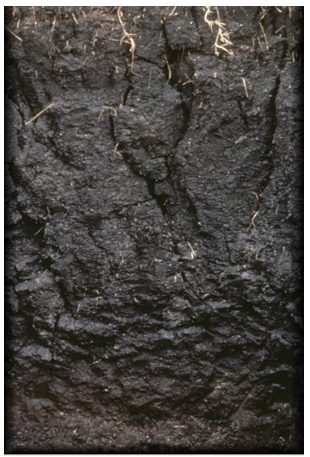The Monroe Doctrine prohibited trade and visitation with Cuba
a. True
b. False
Indicate whether the statement is true or false
False
RATIONALE: In 1823, US intentions for Latin America were formulated in a policy known as the Monroe Doctrine, after US President James Monroe announced that the United States would prevent European countries from undertaking any new colonizing activities in the hemisphere.
You might also like to view...
The soil pictured below is

A) Vertisols.
B) Oxisols.
C) Gelisols.
D) Spodosols.
Central place theory
A) states that cities and towns are surrounded by core areas. B) was formulated by Walter Christaller. C) asserts that market hinterlands must be of intermediate shape. D) asserts that the ideal shape for the market hinterland is the oval.
As the wind velocity increases during a storm, ____
A) the wave height increases B) the wave velocity decreases C) the wind tends to flatten the ocean surface D) wavelength decreases
Which of the following is not a major challenge to the widespread use of renewable energy?
A) Consumers often have limited knowledge about the source of their electricity. B) Government subsidies for fossil fuels reduce incentives for the use of renewable energy. C) The cost of production of these new technologies is high. D) Renewables cannot produce enough energy to meet demand E) There are uncertainties and risk associated with investing in new technologies.